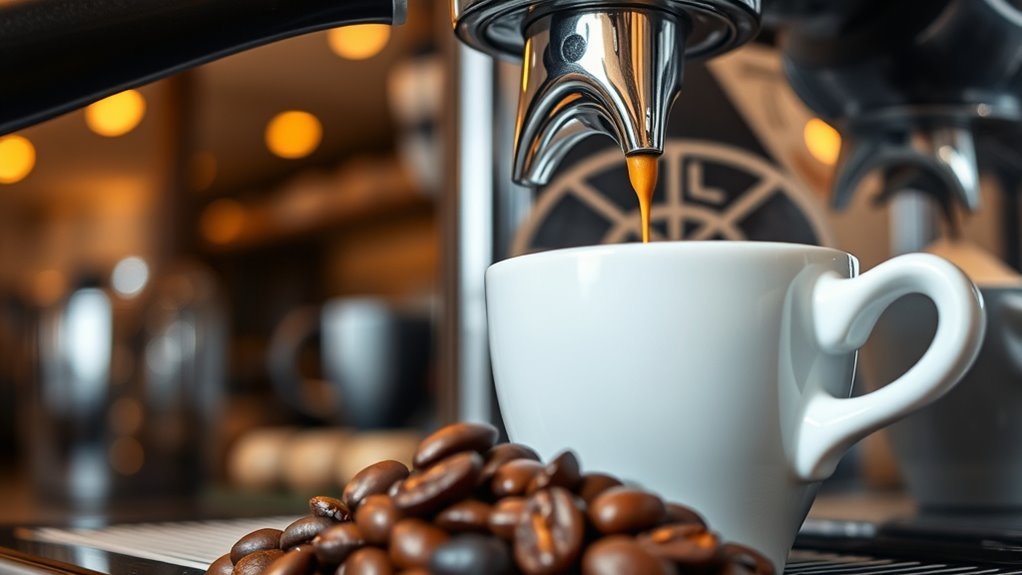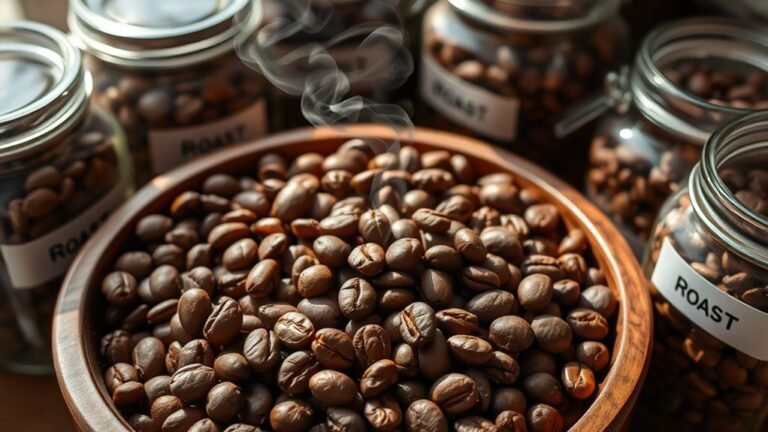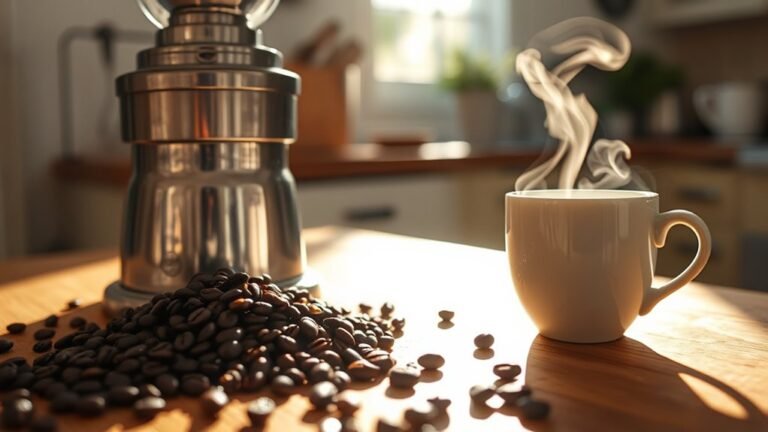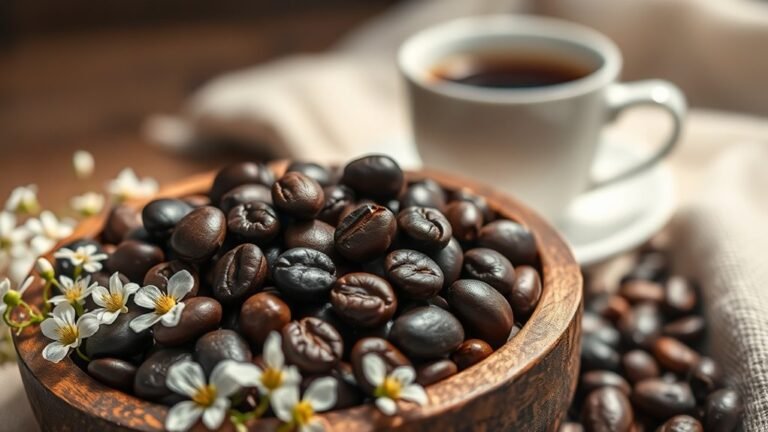Can You Use Normal Coffee Beans for Espresso
Yes, you can use normal coffee beans for espresso. The key lies in your grind size and brewing technique. A fine grind enhances extraction and maximizes flavor. Aim for a brew temperature between 190-205°F and time your shots for 25-30 seconds for the best results. While regular beans bring different flavor profiles compared to traditional espresso beans, experimenting with them can reveal unique taste experiences. There’s more to explore about fine-tuning your espresso brewing process.
Understanding Espresso and Its Unique Characteristics
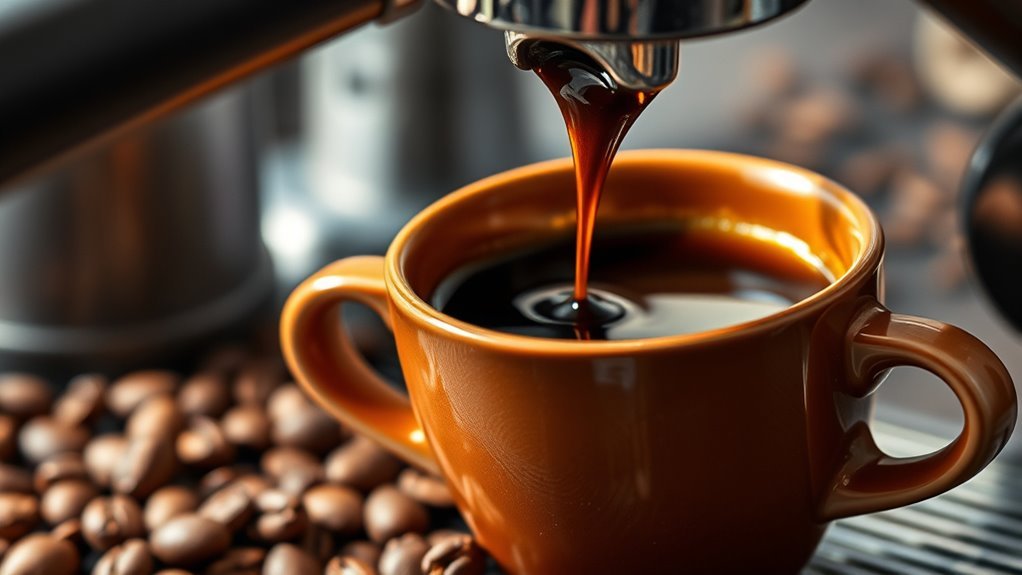
Although many coffee enthusiasts associate espresso with specific beans and brewing methods, understanding its unique characteristics is vital for appreciating this concentrated coffee form. At the heart of espresso lies the process of espresso extraction, which transforms ground coffee into a rich shot with a distinct flavor profile. The coffee grind plays a significant role here; a fine grind facilitates ideal extraction, ensuring that water flows through evenly and efficiently. If the grind is too coarse, you’ll end up with a weak and underwhelming shot. Conversely, an overly fine grind can lead to bitterness, as over-extraction occurs. By mastering these elements, you can experience espresso in its purest, most liberating form, regardless of the beans you choose to use.
The Role of Coffee Beans in Espresso Brewing
Coffee beans play an essential role in espresso brewing, influencing both flavor and aroma. Your bean selection directly impacts the final cup, as different types of beans possess unique characteristics. While traditional espresso beans are often darker roasts, experimenting with lighter varieties can yield surprising results. Understanding the nuances of each bean helps you tailor your espresso to your taste preferences.
Additionally, your brewing techniques are vital in extracting the best qualities from the chosen beans. Factors such as grind size, water temperature, and pressure all contribute to the extraction process. By mastering these elements alongside thoughtful bean selection, you can achieve a well-rounded espresso that showcases the beans’ inherent flavors, providing you with a rich and satisfying experience.
Flavor Profiles: Regular Beans vs. Espresso Beans
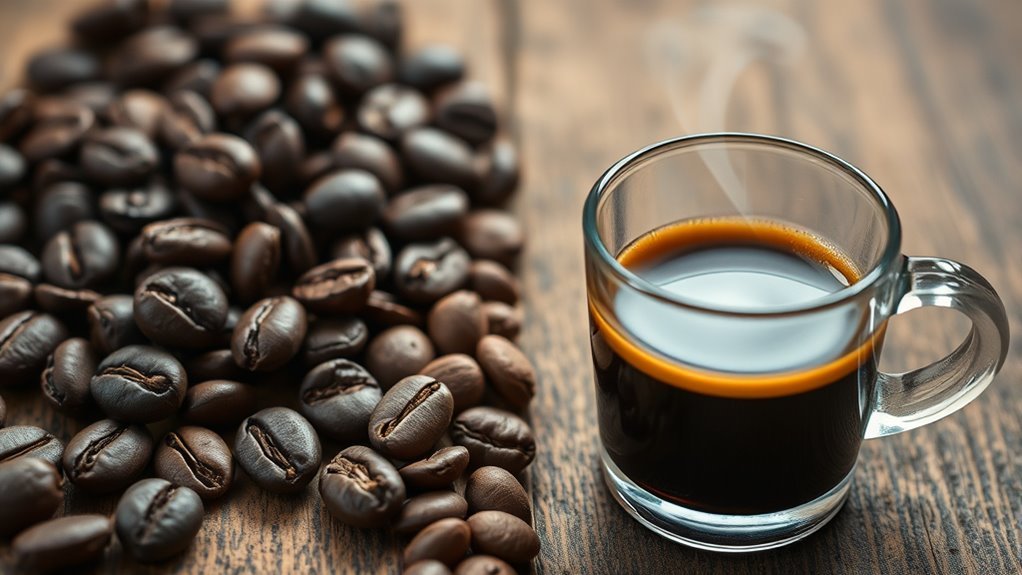
When comparing flavor profiles, regular beans and espresso beans present distinct characteristics that greatly affect the drinking experience. Regular beans often highlight bright acidity and complex flavor nuances, while espresso beans focus on a deeper, richer profile.
- Regular beans can showcase fruity and floral notes.
- Espresso beans typically have a bold, syrupy body with chocolatey undertones.
- Aroma differences between the two can range from light and fragrant to deep and robust.
These variations influence how you perceive and enjoy each cup. While you can use regular beans for espresso, understanding these flavor profiles will help you make informed choices, ensuring your coffee experience aligns with your palate preferences. Ultimately, the choice is yours, so explore freely!
Tips for Brewing Espresso With Normal Coffee Beans
Exploring the flavor nuances of regular beans can open new avenues for your espresso experience. To enhance your brew, pay close attention to grind size; a finer grind improves extraction, essential for achieving that rich flavor. Experiment with different settings on your grinder to find what works best for your beans.
Brew temperature is equally important; aim for around 190-205°F. This range allows for ideal extraction without scalding the beans. Monitor your brewing time, aiming for about 25-30 seconds for the perfect shot.
Don’t hesitate to adjust these variables based on the specific beans you’re using. Each batch may require slight tweaks, allowing you to fully explore the potential of your normal coffee beans in espresso.
Experimenting With Blends and Roast Levels
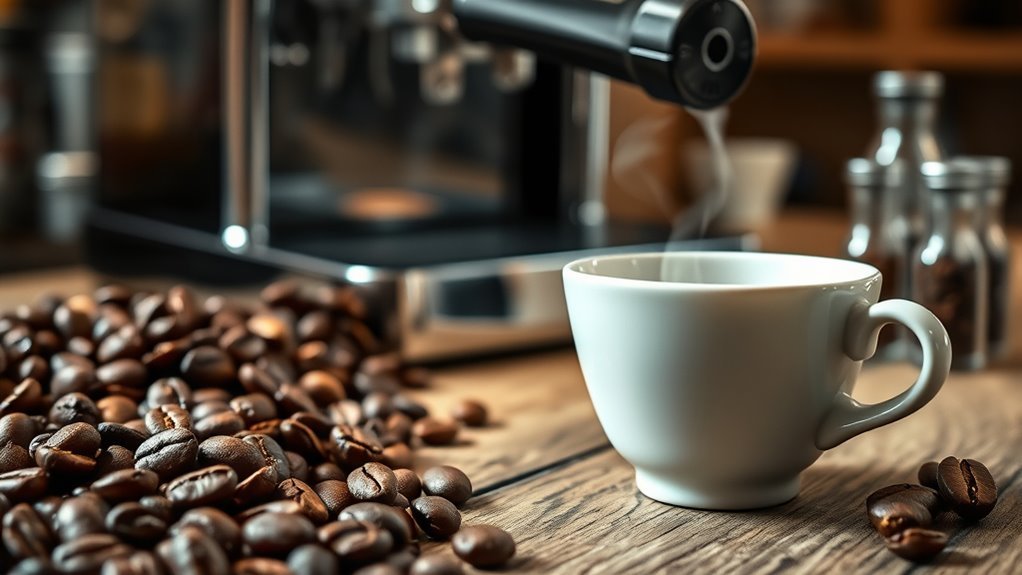
While many espresso enthusiasts gravitate towards specific blends and roast levels, the potential of normal coffee beans offers a unique opportunity for experimentation. By exploring various blending techniques and roast profiles, you can create a personalized espresso experience. Consider these approaches:
- Mixing origins: Combine beans from different regions to balance flavors and acidity.
- Adjusting roast levels: Experiment with light, medium, and dark roasts to discover how each affects extraction and taste.
- Creating signature blends: Develop your own blends by pairing beans with complementary characteristics.
Embracing this freedom allows you to break away from traditional espresso norms, leading to innovative and enjoyable results. Whether you prefer fruity, nutty, or chocolatey notes, the journey is yours to explore.
Frequently Asked Questions
Can I Use Decaf Beans for Making Espresso?
Absolutely, you can use decaf beans for making espresso. While decaf might not offer the same intensity as regular beans, it can still deliver a rich flavor profile. Just remember, the espresso strength may vary based on the bean’s roast and grind. Experimenting with different decaf brands can help you find the perfect balance of decaf flavor and strength you’re looking for, allowing you to enjoy espresso without the caffeine kick.
How Does Grind Size Affect Normal Coffee Beans for Espresso?
How important do you think grind size is for brewing a great cup of coffee? The consistency of your grind directly affects extraction time, which determines the flavor profile. A finer grind usually leads to quicker extraction, enhancing bold notes, while a coarser grind might result in a weaker brew. If you want to truly enjoy your coffee, paying attention to grind size is essential for achieving that perfect balance and depth of flavor.
What Is the Best Brewing Temperature for Normal Coffee Beans?
The best brewing temperature for normal coffee beans typically ranges between 195°F and 205°F. At this range, you’ll reveal the ideal flavor profiles without extracting undesirable bitterness. Different brewing techniques, like pour-over or French press, might slightly adjust this temperature for specific results. Experimenting within this range allows you to discover your preferred balance of acidity and sweetness, giving you the freedom to tailor each cup to your unique taste.
Can I Mix Regular Beans With Espresso Beans?
You can mix regular beans with espresso beans, but consider the flavor profile you’re aiming for. Each type of bean brings unique characteristics, and blending them could enhance or dilute your brew. Experimenting with different ratios might yield interesting results, depending on your brewing method. Just be aware that the balance of flavors may shift, so it’s worth tasting your blend to find what suits your palate best. Enjoy the freedom to create!
How Does Water Quality Impact Espresso Made From Normal Beans?
Water quality’s essential for your espresso, especially when using normal beans. Think of water temperature and mineral content as the backbone of flavor extraction. If your water’s too hot or cold, the extraction’s off, leading to bitterness or sourness. High mineral content can enhance taste, but too much can mask the beans’ nuances. Ultimately, great espresso comes from a balanced interplay between water quality and your chosen beans, allowing freedom in flavor exploration.
